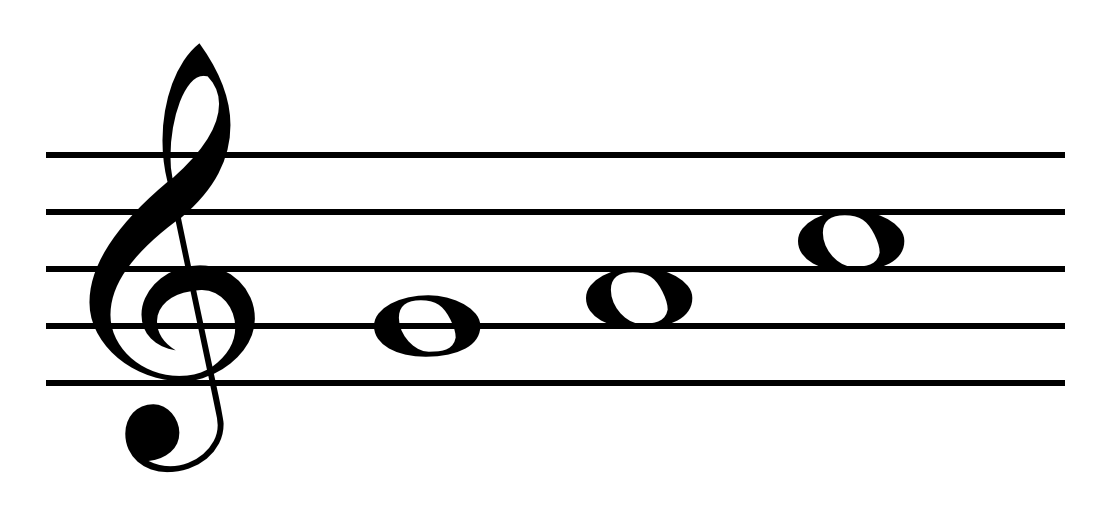|
Prelude And Fugue In C-sharp Minor, BWV 849
The Prelude and Fugue in C-sharp minor, Bach-Werke-Verzeichnis, BWV 849, is a pair of keyboard compositions by Johann Sebastian Bach. It is the fourth prelude and fugue in the first book of ''The Well-Tempered Clavier'', a series of 48 prelude (music), preludes and fugues by the composer. Prelude The solemn and expressive, recitative character of the melody is reminiscent of Bach's passion music. A direct relationship between the prelude and its fugue, while not readily apparent, is hinted in the long-held durations of the bass in the first ten measures. If one omits the bass pitches of measures 4–7, what remains of measures 1–10 are the pitches C, B, E, D, C of the fugue's Subject (music), subject. The prelude's most memorable Motif (music), motif is an ascending octave leap, which is heard throughout the piece. Fugue At 115 measures in length, and in five Voice (music), voices, this is one of Bach's longest and most densely-crafted fugues. While it contains thr ... [...More Info...] [...Related Items...] OR: [Wikipedia] [Google] [Baidu] |
Exposition (music)
In musical form and analysis, exposition is the initial presentation of the thematic material of a musical composition, movement, or section. The use of the term generally implies that the material will be developed or varied. *In sonata form, the exposition is "the first major section, incorporating at least one important modulation to the dominant or other secondary key and presenting the principal thematic material." *In a fugue, the exposition is "the statement of the subject in imitation by the several voices; especially the first such statement, with which the fugue begins." In sonata form The term is most widely used as an analytical convenience to denote a portion of a movement identified as an example of classical tonal sonata form. The exposition typically establishes the music's tonic key, and then modulates to, and ends in, the dominant. If the exposition starts in a minor key, it typically modulates to the relative major key. There are many exception ... [...More Info...] [...Related Items...] OR: [Wikipedia] [Google] [Baidu] |
New Bach Edition
The New Bach Edition (NBE) (; NBA), is the second complete edition of the music of Johann Sebastian Bach, published by Bärenreiter. The name is short for Johann Sebastian Bach (1685–1750): New Edition of the Complete Works (''Johann Sebastian Bach (1685–1750): Neue Ausgabe sämtlicher Werke''). It is a historical-critical edition (German: ''historisch-kritische Ausgabe'') of Bach's complete works by the Johann Sebastian Bach Institute (Johann-Sebastian-Bach-Institut) in Göttingen and the Bach Archive (Bach-Archiv) in Leipzig, When Bach died most of his work was unpublished. The first complete edition of Bach's music was published in the second half of the nineteenth century by the Bach Gesellschaft ( Bach-Gesellschaft Ausgabe, BGA). The second complete edition includes some discoveries made since 1900, but there are relatively few such scores. The significance of the NBE lies more in its incorporation of the latest scholarship. Although the NBE is an urtext edition rather ... [...More Info...] [...Related Items...] OR: [Wikipedia] [Google] [Baidu] |
Alfred Dürr
Alfred Dürr (3 March 1918 – 7 April 2011) was a German musicologist. He was a principal editor of the Neue Bach-Ausgabe, the second edition of the complete works of Johann Sebastian Bach. Professional career Dürr studied musicology and Classical philology at the Georg-August-Universität Göttingen from 1945 to 1950. He wrote his thesis about Bach's early Bach cantata, cantatas. From 1951 until his retirement in 1983 he was an employee of the Johann Sebastian Bach Institute in Göttingen, West Germany, from 1962 to 1981 its deputy director. His work involved collaboration with colleagues in East Germany. He was a principal editor of the Neue Bach-Ausgabe, a project which was divided between the Johann Sebastian Bach Institute and the Bach-Archiv Leipzig in East Germany. From 1953 to 1974 Dürr was editor of the ''Bach-Jahrbuch'' (Bach almanach), together with Werner Neumann, the founder and director of the Bach-Archiv Leipzig. Dürr received honorary doctorates of music fro ... [...More Info...] [...Related Items...] OR: [Wikipedia] [Google] [Baidu] |
Breitkopf & Härtel
Breitkopf & Härtel () is a German Music publisher, music publishing house. Founded in 1719 in Leipzig by Bernhard Christoph Breitkopf, it is the world's oldest music publisher. Overview The catalogue contains over 1,000 composers, 8,000 works and 15,000 music editions or books on music. The name "Härtel" was added when Gottfried Christoph Härtel took over the company in 1795. In 1807, Härtel began to manufacture pianos, an endeavour which lasted until 1870. Breitkopf pianos were highly esteemed in the 19th century by such pianists as Franz Liszt and Clara Schumann. In the 19th century the company was for many years the publisher of the ''Allgemeine musikalische Zeitung'', an influential music journal. The company has consistently supported composers and had close editorial collaboration with Ludwig van Beethoven, Beethoven, Joseph Haydn, Haydn, Felix Mendelssohn, Mendelssohn, Robert Schumann, Schumann, Frédéric Chopin, Chopin, Franz Liszt, Liszt, Richard Wagner, Wagner a ... [...More Info...] [...Related Items...] OR: [Wikipedia] [Google] [Baidu] |
Bach-Gesellschaft Ausgabe
Joh. Seb. Bach's Werke () is the Bach Gesellschaft's collected edition of Johann Sebastian Bach's compositions, published in 61 volumes in the second half of the 19th century. The series is also known as Bach-Gesellschaft edition (; BGA), or as ''Bach-Gesamtausgabe'' (BG; ). It is a German-language edition: title pages and notes by editors are exclusively in German. A supplemental volume was published in 1926, a quarter of a century after the Bach Gesellschaft's dissolution. Another late addition to the series was Max Schneider (music historian), Max Schneider's 1935 revision of the fourth volume. All volumes, including the 20th-century additions, were published by Breitkopf & Härtel. As a complete edition of Bach's works it was succeeded by the New Bach Edition, published between 1954 and 2007. Volumes The Year (Yr.) in the second column refers to the volume's date of publication, that is the date of the editor's ('Preface') if different from the date on the title page. [...More Info...] [...Related Items...] OR: [Wikipedia] [Google] [Baidu] |
Prelude And Fugue In C-sharp Minor, BWV 849 (Bach, Johann Sebastian)
The Prelude and Fugue in C minor, BWV 849, is a pair of keyboard compositions by Johann Sebastian Bach. It is the fourth prelude and fugue in the first book of ''The Well-Tempered Clavier'', a series of 48 preludes and fugues by the composer. Prelude The solemn and expressive, recitative character of the melody is reminiscent of Bach's passion music. A direct relationship between the prelude and its fugue, while not readily apparent, is hinted in the long-held durations of the bass in the first ten measures. If one omits the bass pitches of measures 4–7, what remains of measures 1–10 are the pitches C, B, E, D, C of the fugue's subject. The prelude's most memorable motif is an ascending octave leap, which is heard throughout the piece. Fugue At 115 measures in length, and in five voices, this is one of Bach's longest and most densely-crafted fugues. While it contains three themes, it is not properly structured as a triple fugue because only the first idea rece ... [...More Info...] [...Related Items...] OR: [Wikipedia] [Google] [Baidu] |
Invertible Counterpoint
In music theory, an inversion is a rearrangement of the top-to-bottom elements in an interval, a chord, a melody, or a group of contrapuntal lines of music. In each of these cases, "inversion" has a distinct but related meaning. The concept of inversion also plays an important role in musical set theory. Intervals An interval is inverted by raising or lowering either of the notes by one or more octaves so that the higher note becomes the lower note and vice versa. For example, the inversion of an interval consisting of a C with an E above it (the third measure below) is an E with a C above it – to work this out, the C may be moved up, the E may be lowered, or both may be moved. : The tables to the right show the changes in interval quality and interval number under inversion. Thus, perfect intervals remain perfect, major intervals become minor and vice versa, and augmented intervals become diminished and vice versa. (Doubly diminished intervals become doubly augme ... [...More Info...] [...Related Items...] OR: [Wikipedia] [Google] [Baidu] |
Diminution
In Western culture, Western music and music theory, diminution (from Medieval Latin ''diminutio'', alteration of Latin ''deminutio'', decrease) has four distinct meanings. Diminution may be a form of embellishment (music), embellishment in which a long Musical note, note is divided into a series of shorter, usually melodic, values (also called "Color (medieval music)#Coloration (ornamentation), coloration"; Ger. ''Kolorieren''). Diminution may also be the compositional device where a melody, theme (music), theme or motif (music), motif is presented in shorter note-values than were previously used. Diminution is also the term for the proportional shortening of the note value, value of individual note-shapes in mensural notation, either by color (medieval music), coloration or by a Mensural notation#Proportions and colorations, sign of proportion. A minor or perfect interval (music), interval that is narrowed by a chromatic semitone is a diminished interval, and the process may be ... [...More Info...] [...Related Items...] OR: [Wikipedia] [Google] [Baidu] |
Nun Komm, Der Heiden Heiland
"" (original: "", English: "Savior of the nations, come", literally: Now come, Saviour of the heathen) is a Lutheran chorale of 1524 with words written by Martin Luther, based on by Ambrose, and a melody, Zahn number, Zahn 1174, based on its plainsong, plainchant. It was printed in the ''Erfurt Enchiridion'' of 1524. The song was the prominent hymn for the first Sunday of Advent for centuries. It was used widely in organ settings by Protestant Baroque composers, most notably Johann Sebastian Bach, who also composed two church cantatas beginning with the hymn. Later settings include works by Max Reger, Brian Easdale and Siegfried Strohbach. English versions include "Savior of the nations, come" by William Morton Reynolds, published in 1851. History Martin Luther wrote the text of "" possibly for the Advent of 1523 as a paraphrase of a passage, , from the Latin Christmas hymn "Intende qui reges Israel" by Ambrose. Several Latin versions begin with "Veni redemptor gentium" ... [...More Info...] [...Related Items...] OR: [Wikipedia] [Google] [Baidu] |
Cross Motif
In music, the cross motif is a motif. A motif (''Crux fidelis'') was used by Franz Liszt to represent the Christian cross ('tonisches Symbol des Kreuzes' or tonic symbol of the cross) and taken from Gregorian melodies.Merrick, Paul (2008). ''Revolution and Religion in the Music of Liszt'', p.284. . See also *Bach motif In music, the BACH motif is the motif (music), motif, a succession of note (music), notes important or characteristic to a musical composition, piece, ''B flat, A, C, B natural''. In Letter notation, German musical nomenclature, in whi ... * Cruciform#Cruciform melody Sources Motifs (music) Franz Liszt {{Classical-music-stub ... [...More Info...] [...Related Items...] OR: [Wikipedia] [Google] [Baidu] |
Stretto
The Italian term ''stretto'' (plural: ''stretti'') has two distinct meanings in music: # In a fugue, ''stretto'' () is the imitation of the subject in close succession, so that the answer enters before the subject is completed.Apel, Willi, ed. (1969). ''Harvard Dictionary of Music'', Second Edition, Revised and Enlarged. The Belknap Press of Harvard University Press, Cambridge, Massachusetts. . # In non-fugal compositions, a ''stretto'' (also sometimes spelled ''stretta'') is a passage, often at the end of an aria or movement, in faster tempo. Examples include the end of Franz Liszt's transcendental etude No.10, the end of the last movement of Beethoven's Fifth Symphony; measure 227 of Chopin's Ballade No. 3; measures 16-18 of his Prelude No. 4 in E minor; and measure 26 of his Etude Op. 10, No. 12, "The Revolutionary." Fugal stretto The term ''stretto'' comes from the Italian past participle of '' stringere'', and means "narrow", "tight", or "close". ... [...More Info...] [...Related Items...] OR: [Wikipedia] [Google] [Baidu] |




